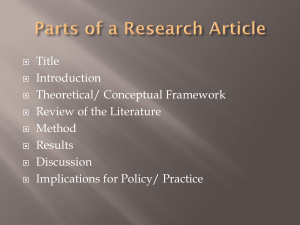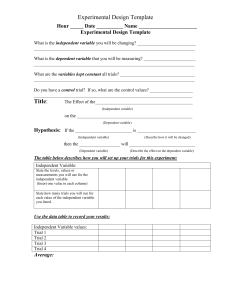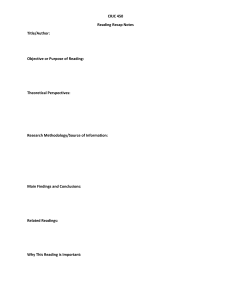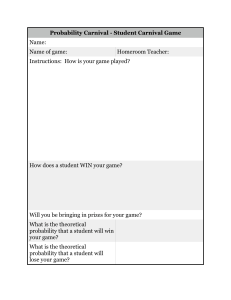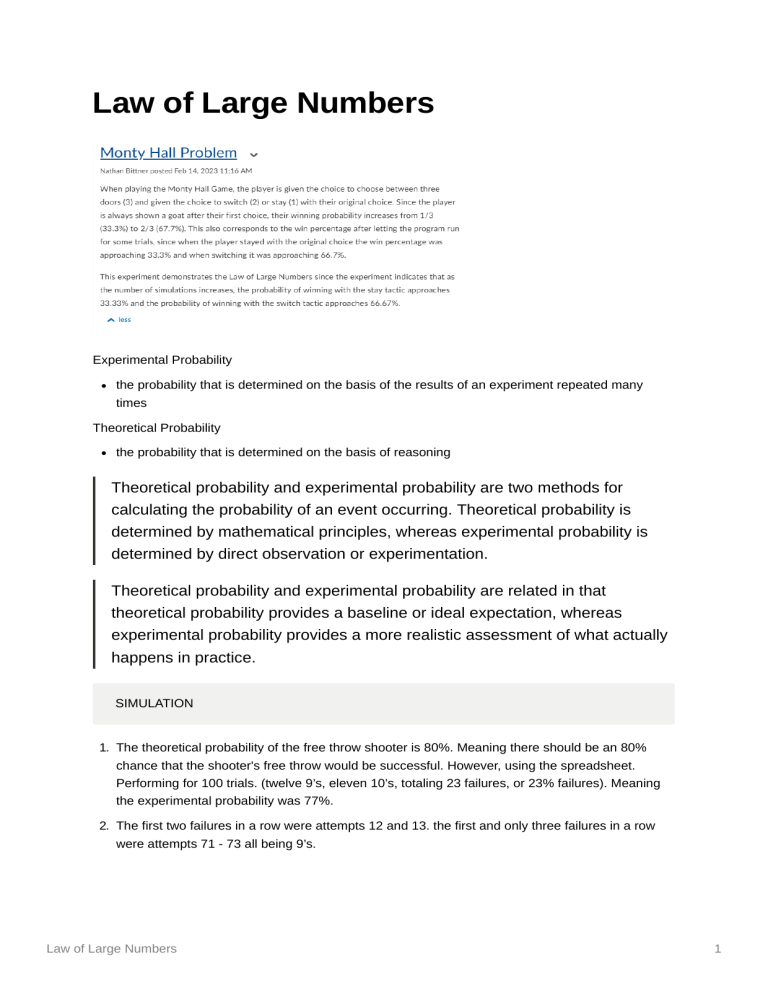
Law of Large Numbers Experimental Probability the probability that is determined on the basis of the results of an experiment repeated many times Theoretical Probability the probability that is determined on the basis of reasoning Theoretical probability and experimental probability are two methods for calculating the probability of an event occurring. Theoretical probability is determined by mathematical principles, whereas experimental probability is determined by direct observation or experimentation. Theoretical probability and experimental probability are related in that theoretical probability provides a baseline or ideal expectation, whereas experimental probability provides a more realistic assessment of what actually happens in practice. SIMULATION 1. The theoretical probability of the free throw shooter is 80%. Meaning there should be an 80% chance that the shooter's free throw would be successful. However, using the spreadsheet. Performing for 100 trials. (twelve 9’s, eleven 10’s, totaling 23 failures, or 23% failures). Meaning the experimental probability was 77%. 2. The first two failures in a row were attempts 12 and 13. the first and only three failures in a row were attempts 71 - 73 all being 9’s. Law of Large Numbers 1 GAMES FAIR Game Theoretical Probability (as a percent) Experimental Probability of 10 trials (as a percent) Experimental Probability of 50 trials(as a percent) Experimental Probability of 100 trials(as a percent) Spinner: Win 10 or more points. 4/10 = 40% 2/10 = 20% 17/50 = 34% 38/100 = 38% Single Card Flip: Win 15 points. 18/52 = 34.6% 3/10 = 30% 12/50 = 24% 31/100 = 31% Application and Communication - Explaining The Law of Large Numbers Law of Large Numbers 2 The Law of Large Numbers is a mathematical rule stating that as the sample size of a random event grows, the average of the observed results approaches the true expected value. A casino benefits from the Law of Large Numbers by providing games with a house edge, which means that the expected value of each bet is in the casino's favour. While individual players may win or lose in the short term, due to the law of large numbers, the casino will make a profit over a large number of bets. TWO DICE EVENT Predicted Theoretical Probability (as a percent) Experimental Probability after 100 trials (as a percent) Experimental Probability after 200 trials (as a percent) Experimental Probability after 300 trials (as a percent) Experimental Probability after 500 trials (as a percent) SUM OF 6 5/36 = 13.8% 13/100 = 13% 32/200 = 16% 44/300 = 14.7% 71/500 = 14.2% SUM OF 7 6/36 = 16.7% 21/100 = 21% 28/200 = 14% 48/300 = 16% 75/500 = 15% SUM OF 8 5/36 = 13.8% 13/100 = 13% 27/200 = 13.5% 41/300 = 13.7% 69/500 = 13.8% Law of Large Numbers 3
